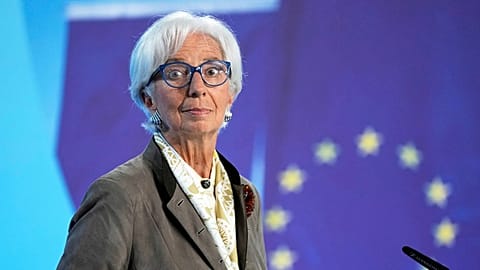Eurozone GDP barely grew in the third quarter of 2025, rising just 0.2% as the wider EU posted similarly weak gains and unemployment remained flat. New business registrations increased, but a sharp rise in bankruptcies across key consumer-facing sectors could highlight a market under pressure.
The latest flash estimate from Eurostat points to continued, if fragile, growth across the eurozone. According to the provisional data for the third quarter of 2025, seasonally adjusted GDP in the eurozone increased only marginally on the previous quarter, with the European Union as a whole showing similarly modest gains.
In the eurozone countries, GDP rose by 0.2% in the third quarter compared to the previous one, and in the broader EU, GDP went up by 0.3% in the same period.
These results indicate that growth is continuing, but remains weak.
The reading confirms that the European economy is still expanding, but it also underlines how persistent the low-growth rut is across the board.
A quarterly rise of just a few tenths of a percentage point does not signal a robust rebound and is more akin to a hesitant step forward.
Year on year, GDP increased by 1.3% in the eurozone and 1.5% across the EU.
Sweden recorded the strongest quarterly performance (+1.1%), followed by Portugal (+0.8%) and Czechia (+0.7%). Contractions were seen in Lithuania (-0.2%), and in Ireland and Finland (both -0.1%).
While the overall picture is weakly positive, economic momentum varies widely between member states.
The seasonally adjusted unemployment rate in the eurozone remained at 6.3% in September, unchanged from both August 2025 and the same month last year.
When non-eurozone EU countries are included, the jobless rate stands slightly lower at 6.0%, flat on the month but up marginally from 5.9% a year earlier.
In total, around 13.246 million people were unemployed in the EU, including about 11.003 million within the eurozone.
Youth unemployment stood at 14.8% in the EU and 14.4% in the eurozone, both broadly stable on the month.
Unemployment among women was 6.5%, unchanged from August, while the rate for men ticked up to 6.2%.
While the job market in the eurozone remains relatively tight by historical standards, the fact that the unemployment rate is flat in the eurozone and only very slightly lower in the broader EU suggests that the labour market is not significantly improving as growth remains weak.
Youth unemployment is also largely flat, meaning that younger workers are not gaining noticeably from any rebound. The gender gap is also visible, with women’s jobless rates being slightly higher than men’s in the eurozone area and not declining further.
New business registrations rise, but bankruptcies climb as well
Eurostat’s latest release also includes business activity data. Company registrations in the EU rose by 4.0% in the third quarter.
Tech, information and communications saw some of the strongest growth in new registrations (+6.0%), followed by construction (+5.9%) and transport (+5.5%).
But bankruptcies also increased, rising by 4.4% quarter-on-quarter. Accommodation and food services saw the steepest jump (+20.7%), followed by transport (+18.7%) and financial services (+14.1%).
In contrast, the information and communications sector saw a 4.8% drop in bankruptcies, construction-related businesses saw a 3.1% dip, and general industrial insolvency went down by 0.1%.
The combination of more new businesses and more bankruptcies points to an EU economy that is still highly dynamic but under strain. The rise in registrations, with especially strong gains in information and communication, construction and transport, suggests there is continuing appetite for entrepreneurship and investment, even in a low-growth environment.
At the same time, the sharp jump in insolvencies in accommodation and food services and in transport could indicate that consumer-facing and logistics-focused sectors remain exposed to high costs and tighter financing conditions.


















